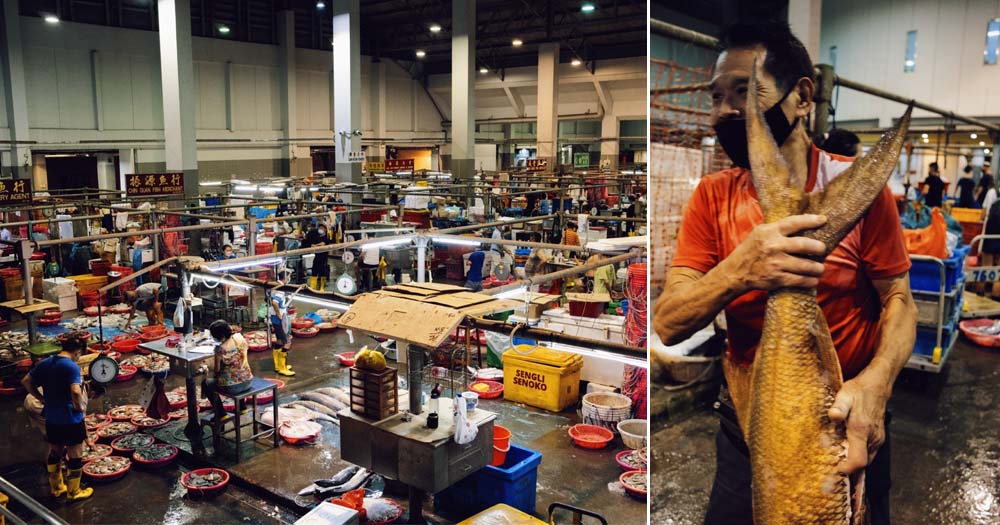Follow us on Telegram for the latest updates: https://t.me/mothershipsg
At 2am in the morning, while most of Singapore is sound asleep, Senoko Fishery Port comes alive.
Located right at the northern tip of the island, the 3,326m² facility houses a wholesale fish market with 36 stalls and represents one of Singapore's major entry points for fresh seafood.
There's a good chance that your local fishmonger probably gets its stock from Senoko.
When I get to the port just before 2am, there's a quiet buzz around the place.
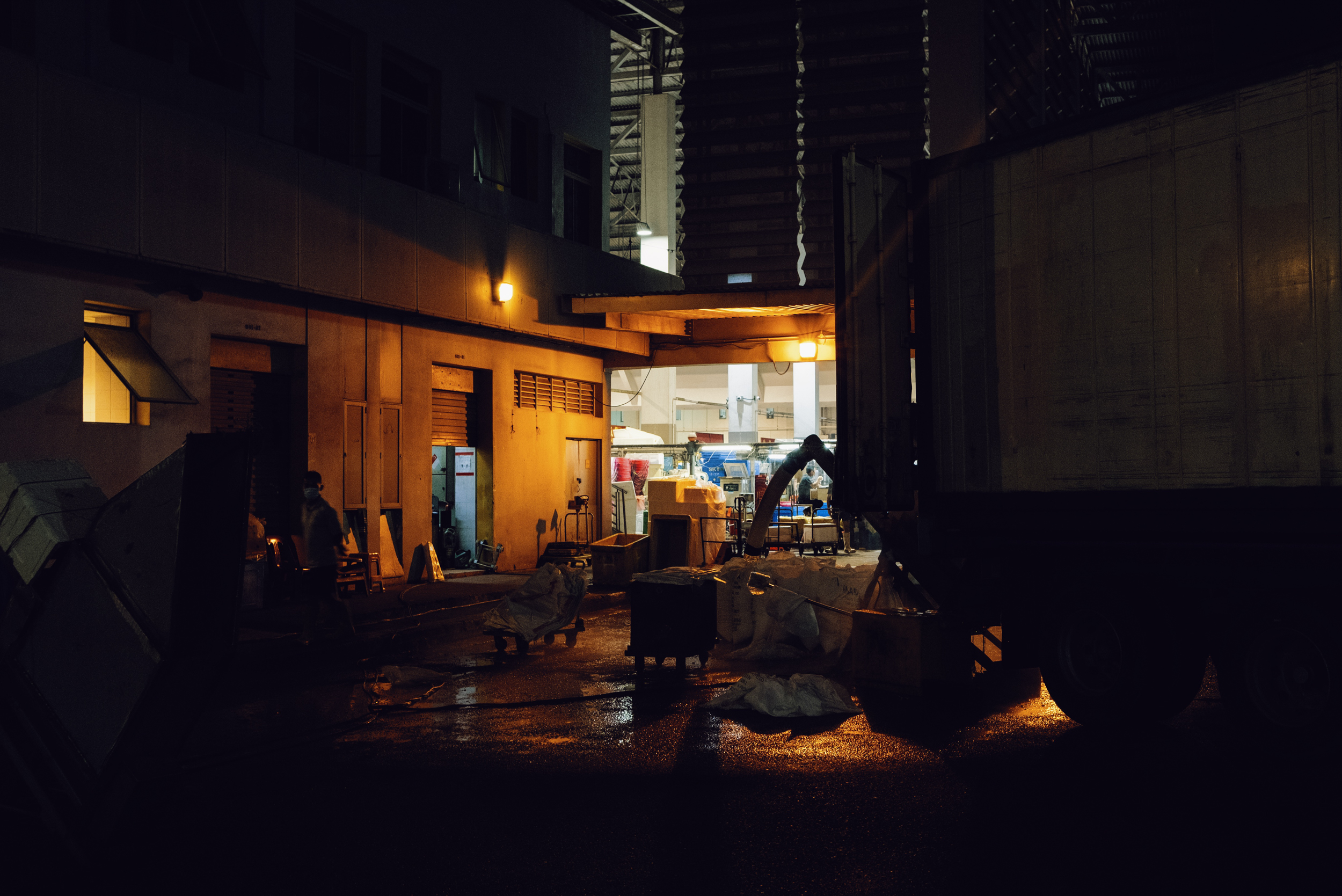 2am at Senoko Fishery Port. Image by Andrew Koay
2am at Senoko Fishery Port. Image by Andrew Koay
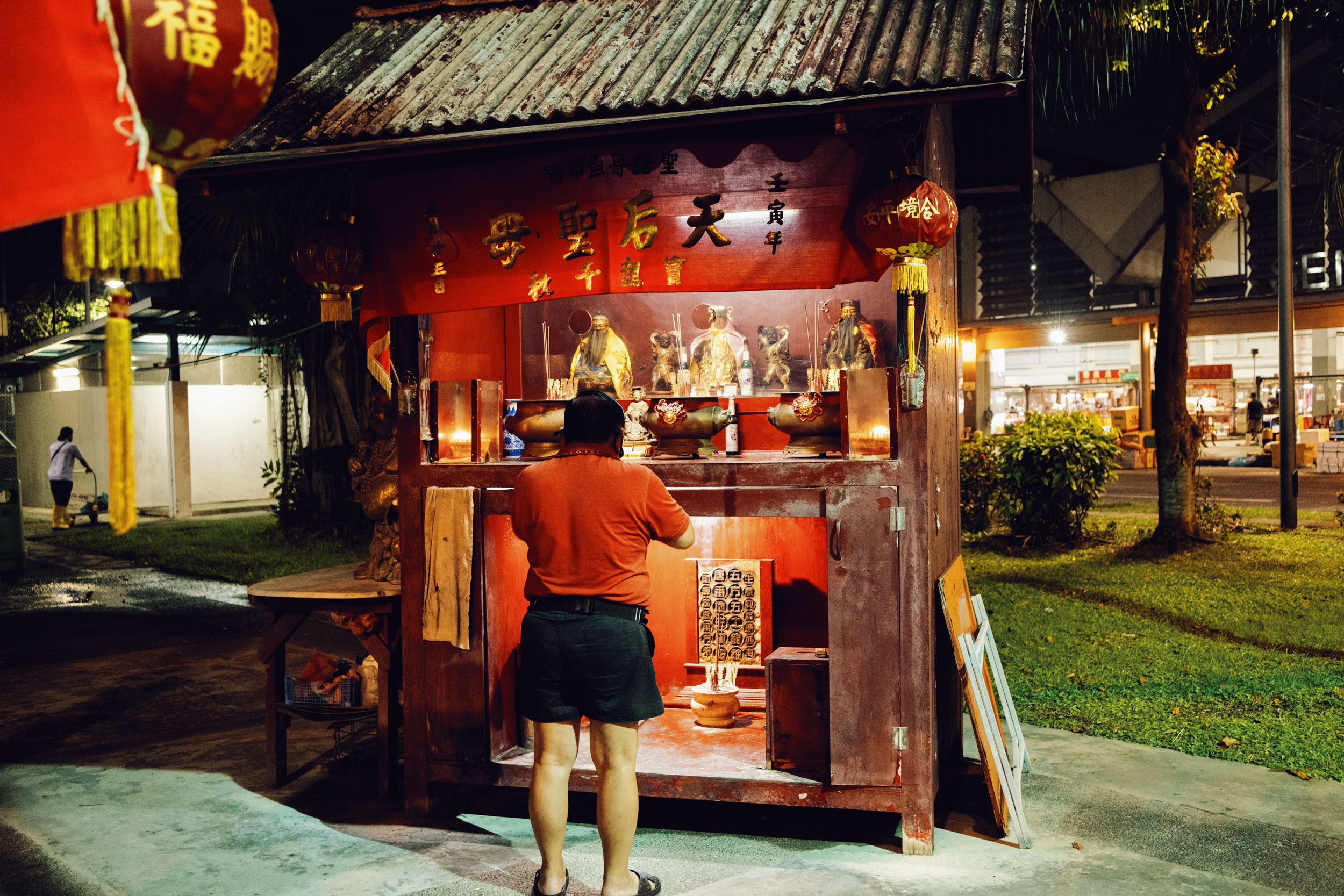 A worker at Senoko Fishery Port offers prayers at an altar outside the wholesale market. Image by Andrew Koay.
A worker at Senoko Fishery Port offers prayers at an altar outside the wholesale market. Image by Andrew Koay.
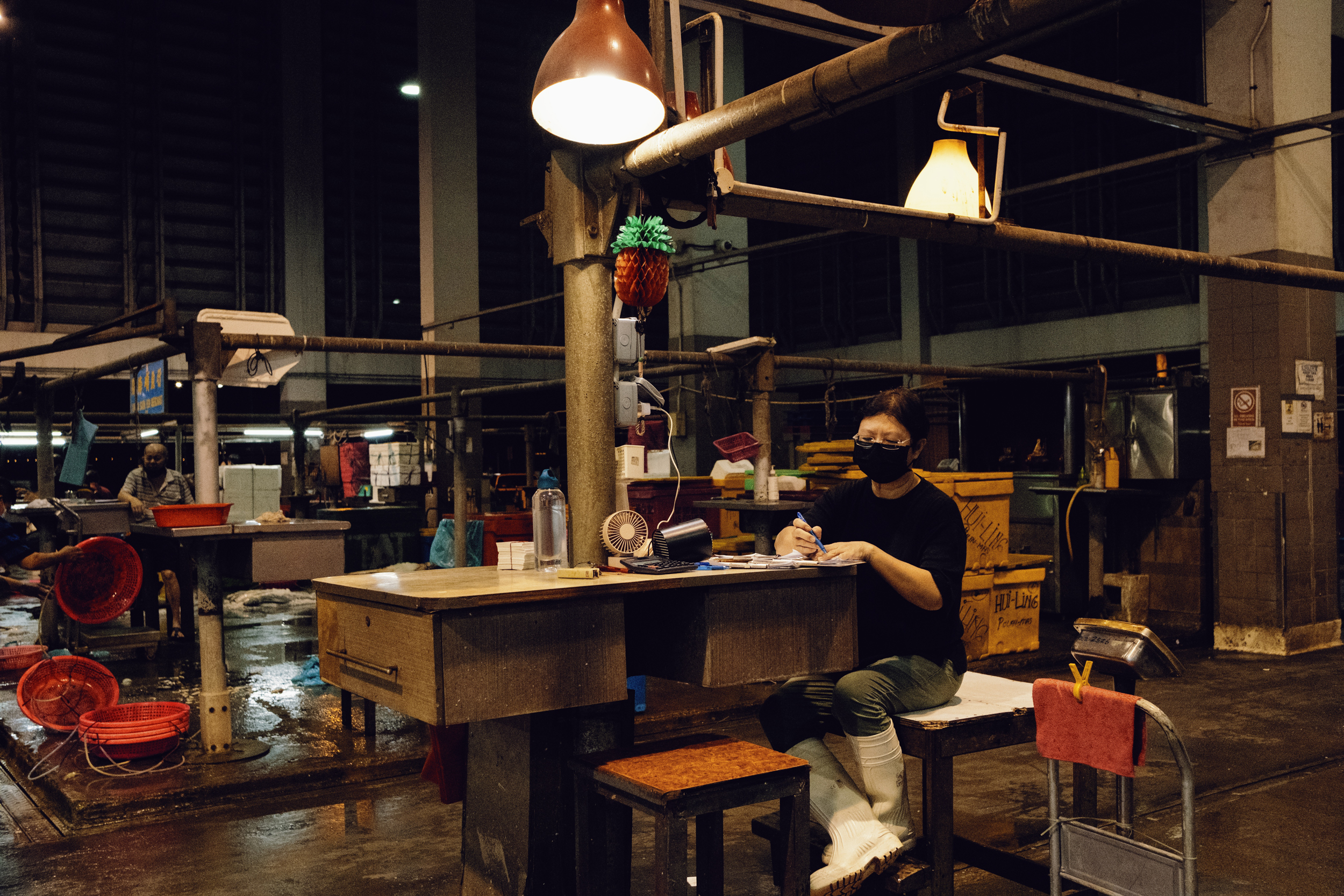 Vendors prepare for the night ahead. Image by Andrew Koay.
Vendors prepare for the night ahead. Image by Andrew Koay.
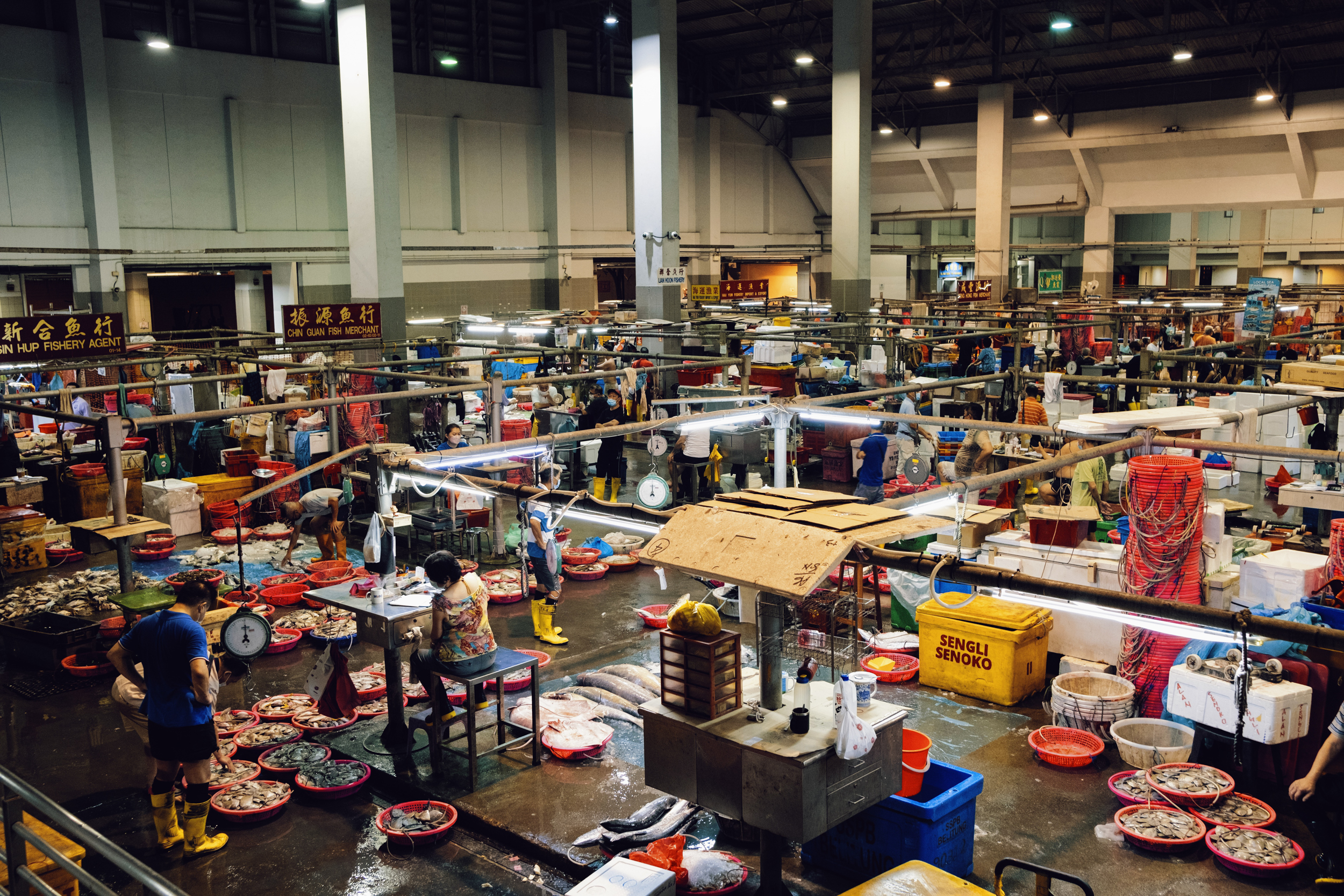 An overview of the Senoko Fishery Port wholesale market. Image by Andrew Koay.
An overview of the Senoko Fishery Port wholesale market. Image by Andrew Koay.
The fish hasn't arrived yet, and Davidson Goh, the 50-year-old director of Lian Yak Fish Merchant is settling accounts with several customers.
Goh's family have been in the wholesale seafood business since 1955, when his grandfather started the business.
They have been at Senoko Fishery Port since it opened in 1997; before that, Lian Yak Fish Merchant ran out of the now closed Punggol Fishing Port.
The Government's announcement that Senoko will close by 2023 — seafood wholesale businesses are to be consolidated at Jurong Fishery Port — means that the family business will soon have to move locations again.
Goh's whole life has also revolved around the business. He remembers helping out as a young child, and started working formally at the wholesaler at the age of 20.
His 70-year-old father still works at the stall, though he is on a break today.
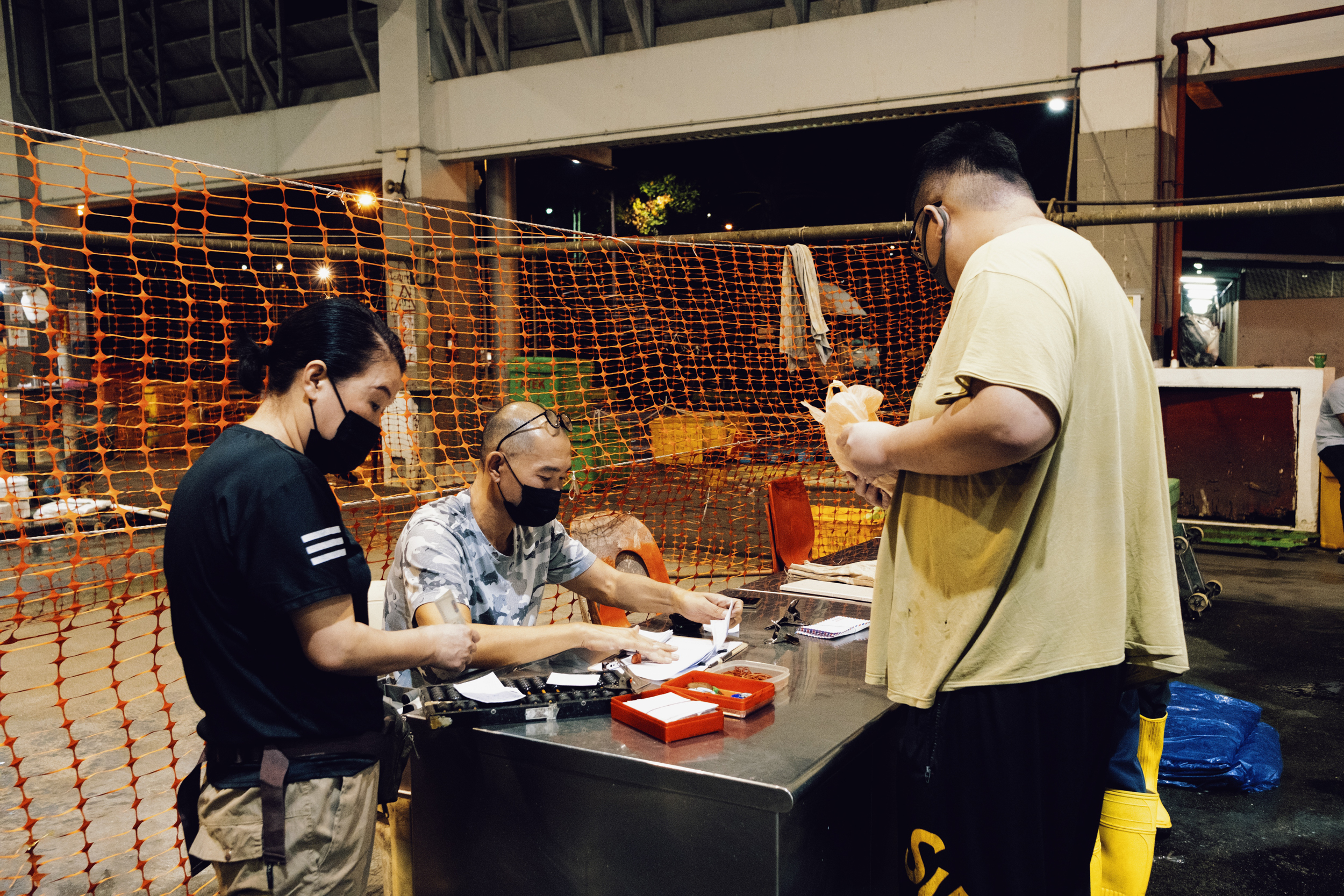 Davidson Goh (centre) settles accounts with customers. Image by Andrew Koay.
Davidson Goh (centre) settles accounts with customers. Image by Andrew Koay.
Before long, large yellow tubs start appearing at Goh's stall.
These are filled with the day's catch, and its contents are emptied on the ground before the Goh's employees get to work sorting them into red baskets — snappers with snappers, mackerels with mackerels, and red groupers with red groupers.
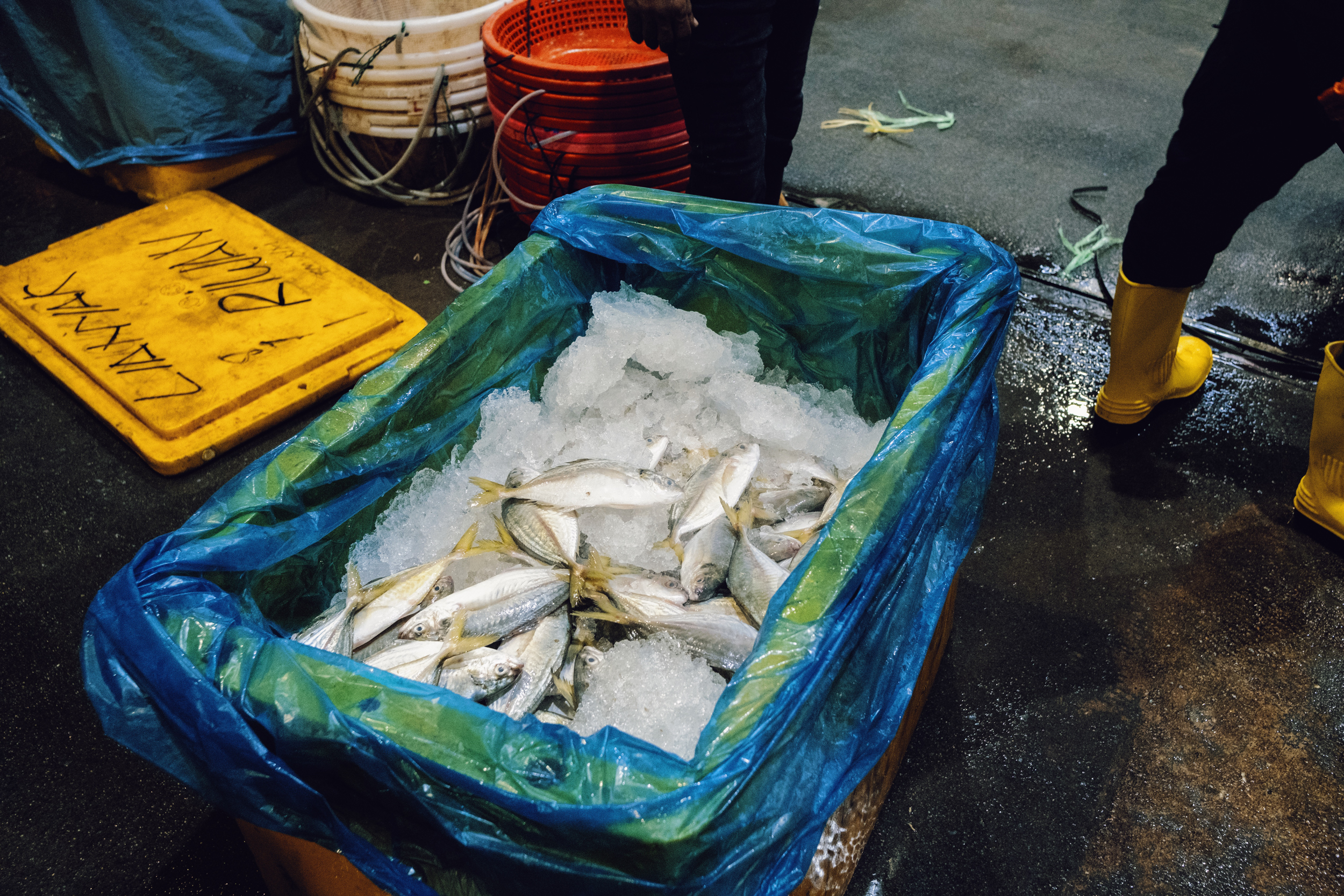 The day's catch arrives at Lian Yak in yellow tubs. Image by Andrew Koay.
The day's catch arrives at Lian Yak in yellow tubs. Image by Andrew Koay.
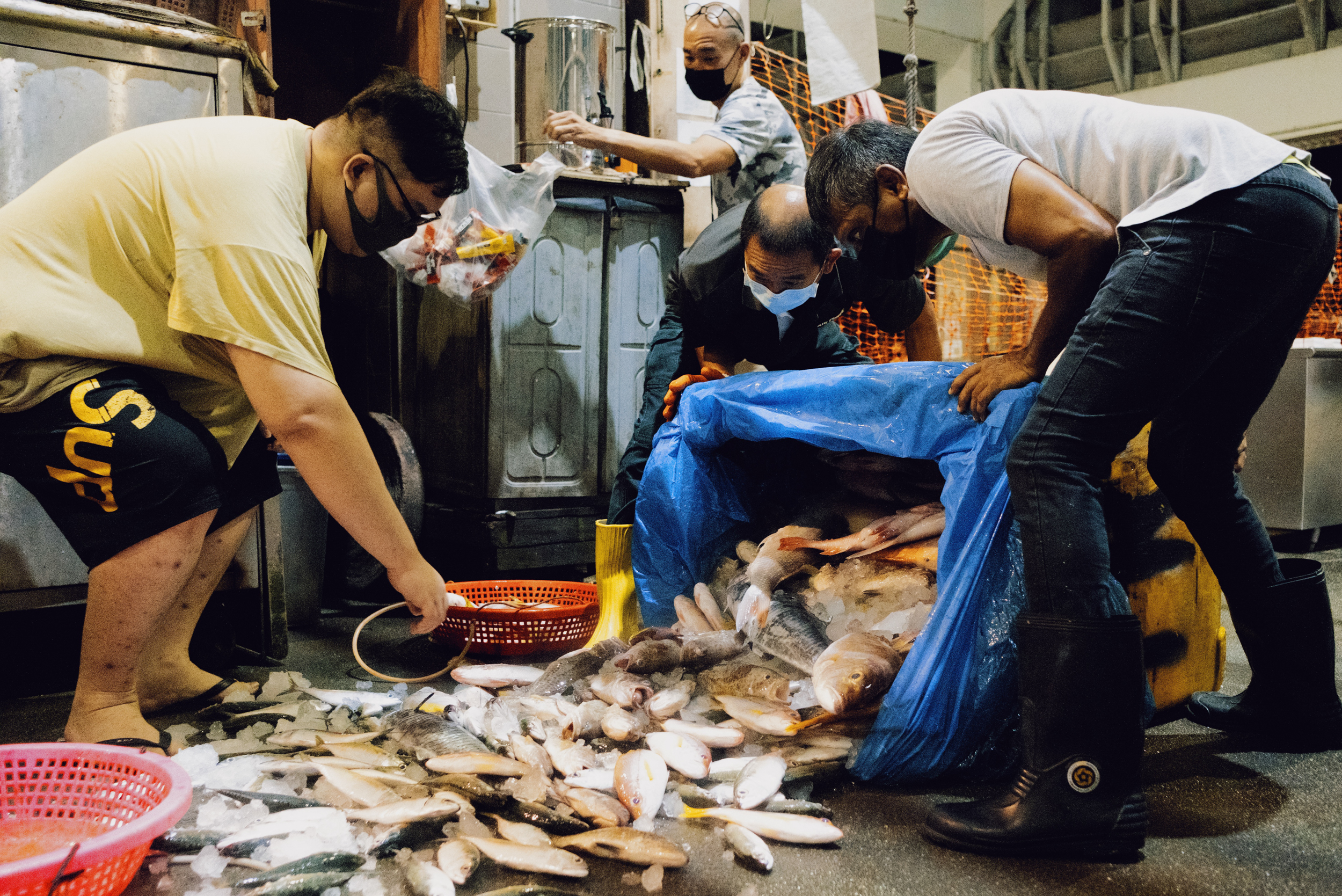 Tubs are emptied out onto the floor for fish to be sorted. Image by Andrew Koay.
Tubs are emptied out onto the floor for fish to be sorted. Image by Andrew Koay.
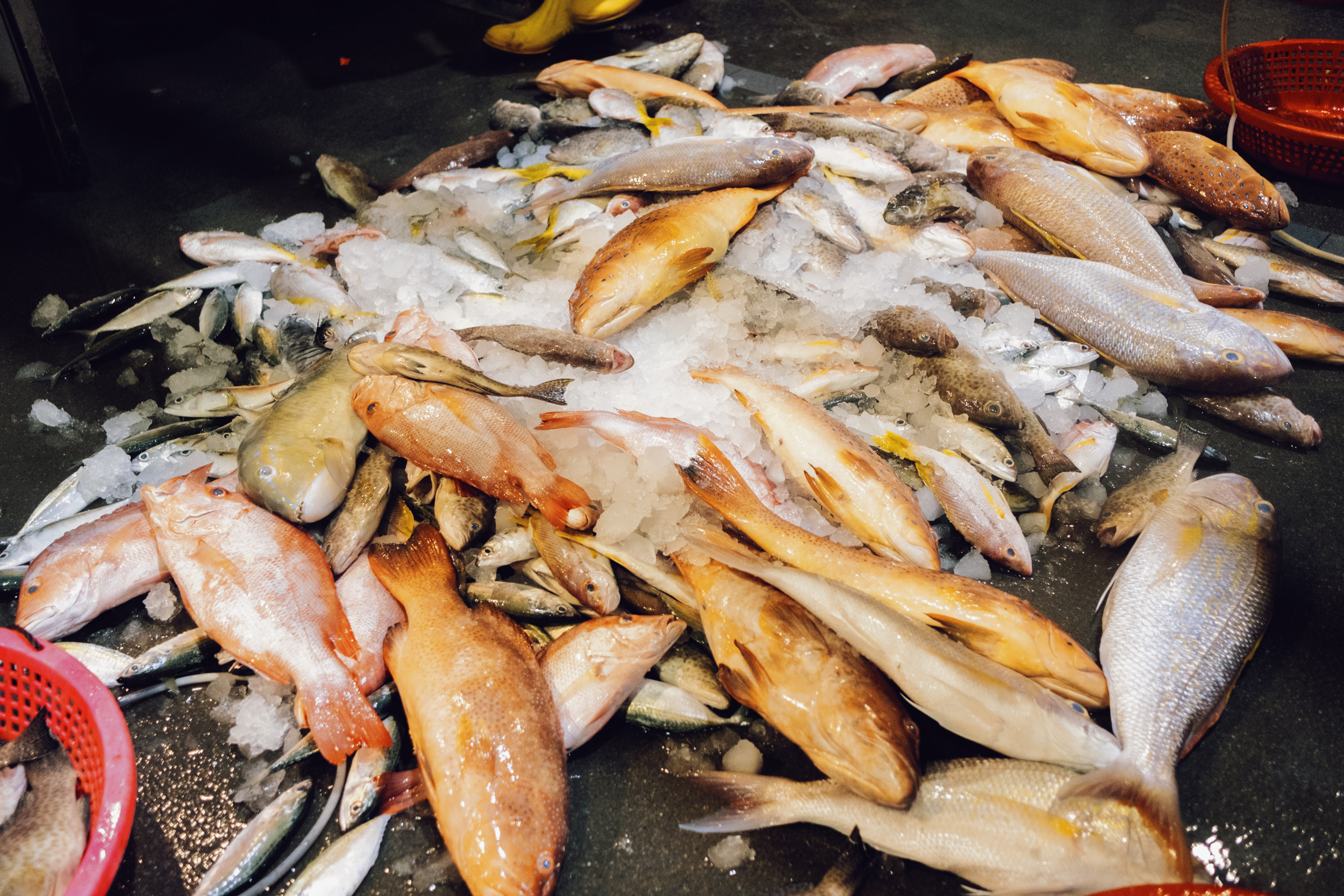 Each tub is filled with different kinds of fish. Image by Andrew Koay.
Each tub is filled with different kinds of fish. Image by Andrew Koay.
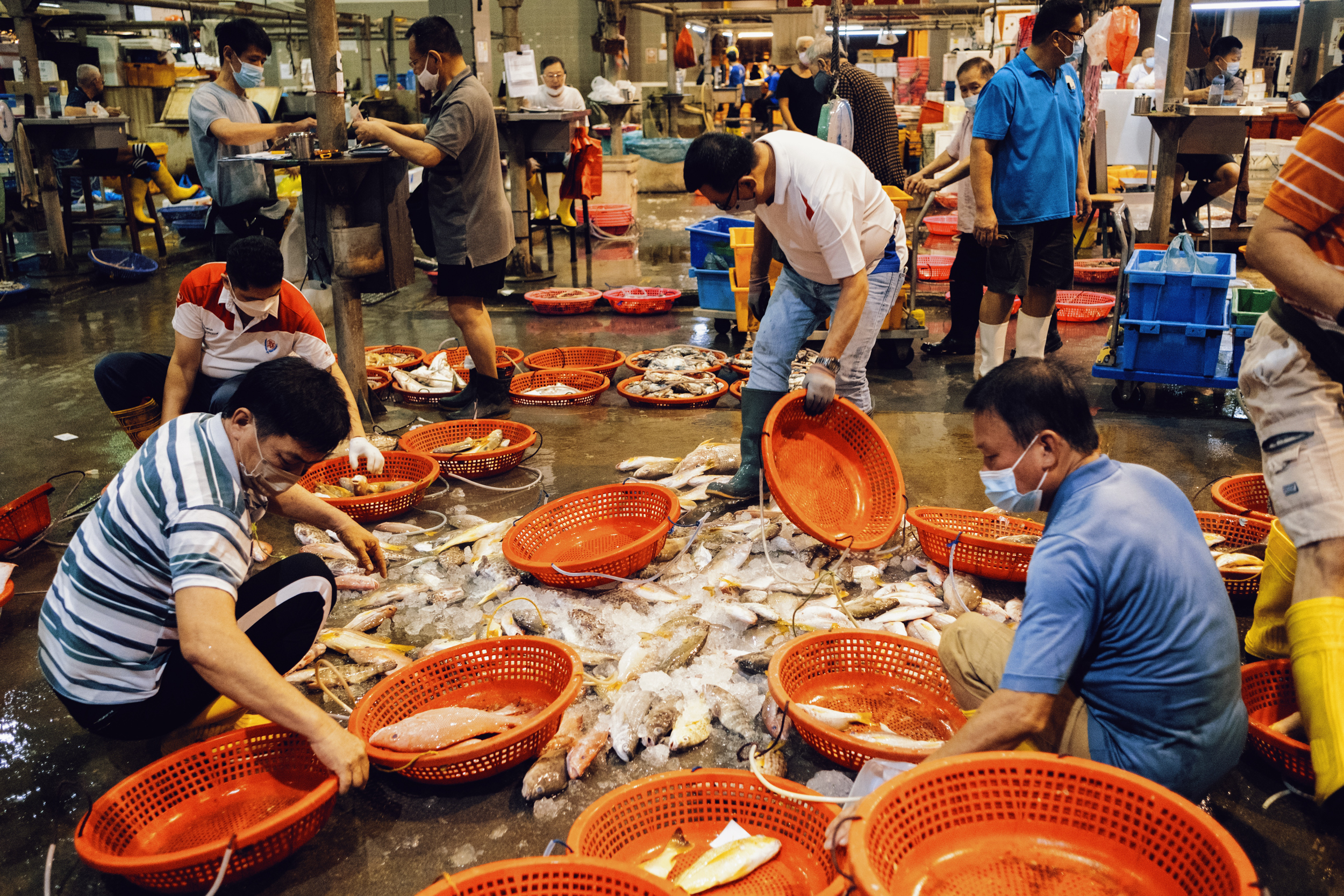 Image by Andrew Koay.
Image by Andrew Koay.
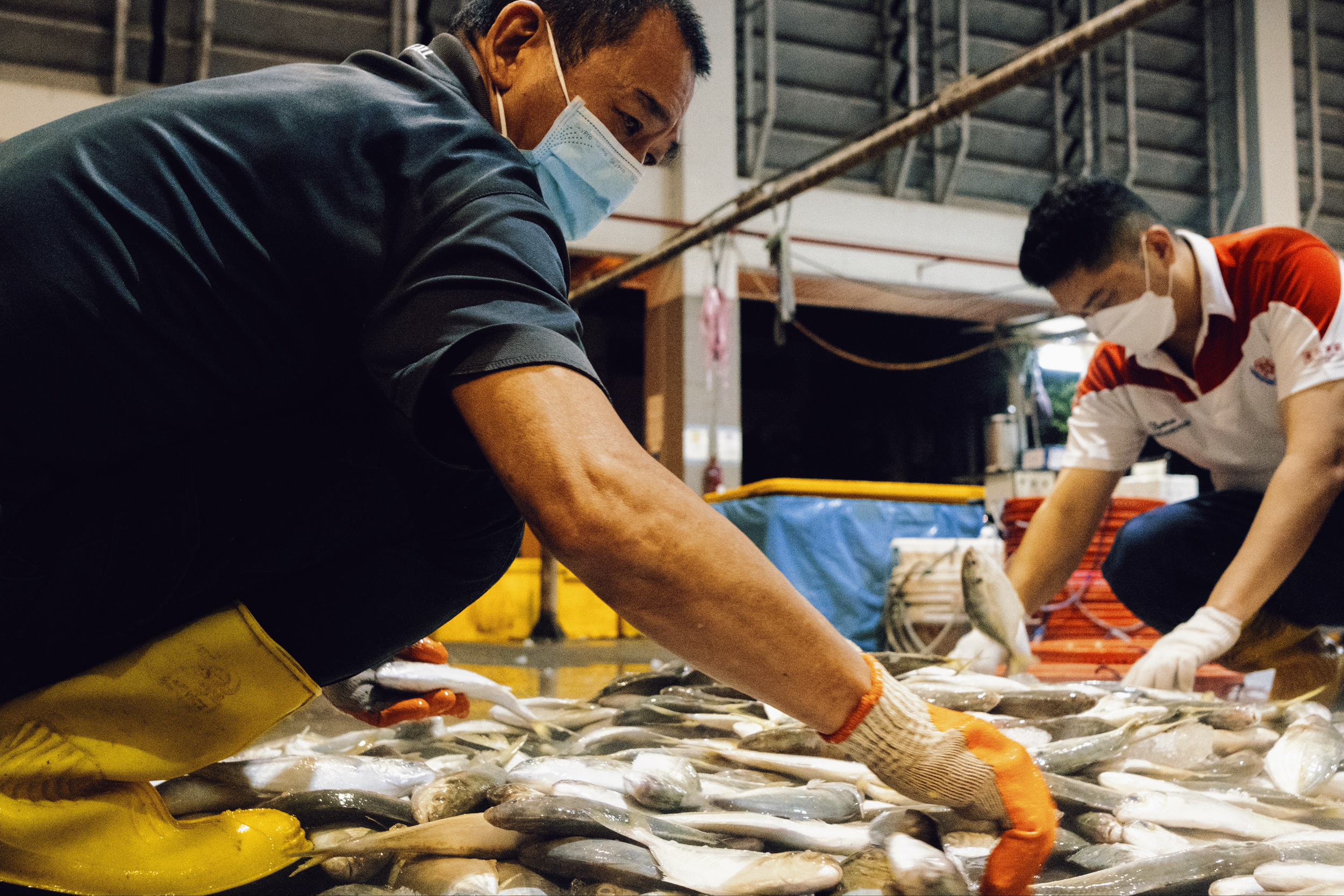 Workers begin sorting the fish into red baskets. Image by Andrew Koay.
Workers begin sorting the fish into red baskets. Image by Andrew Koay.
As more tubs make their way to the stall, customers begin lurking around.
"They're waiting to see if the fish they want are inside the box," Goh tells me.
"It's like a mystery box."
Some, eager to get their hands on the freshest fishes, even help with the unloading and the sorting.
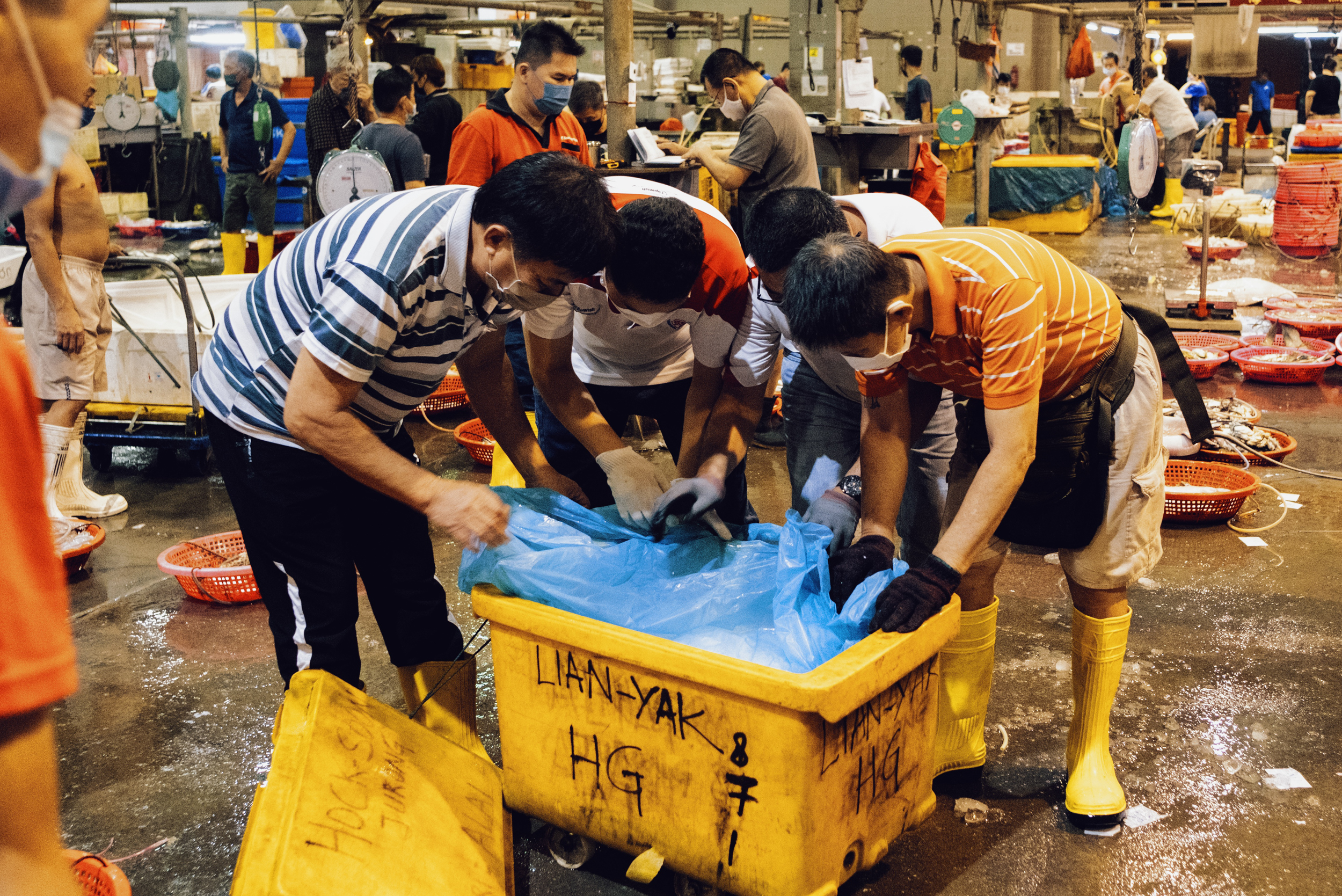 Image by Andrew Koay.
Image by Andrew Koay.
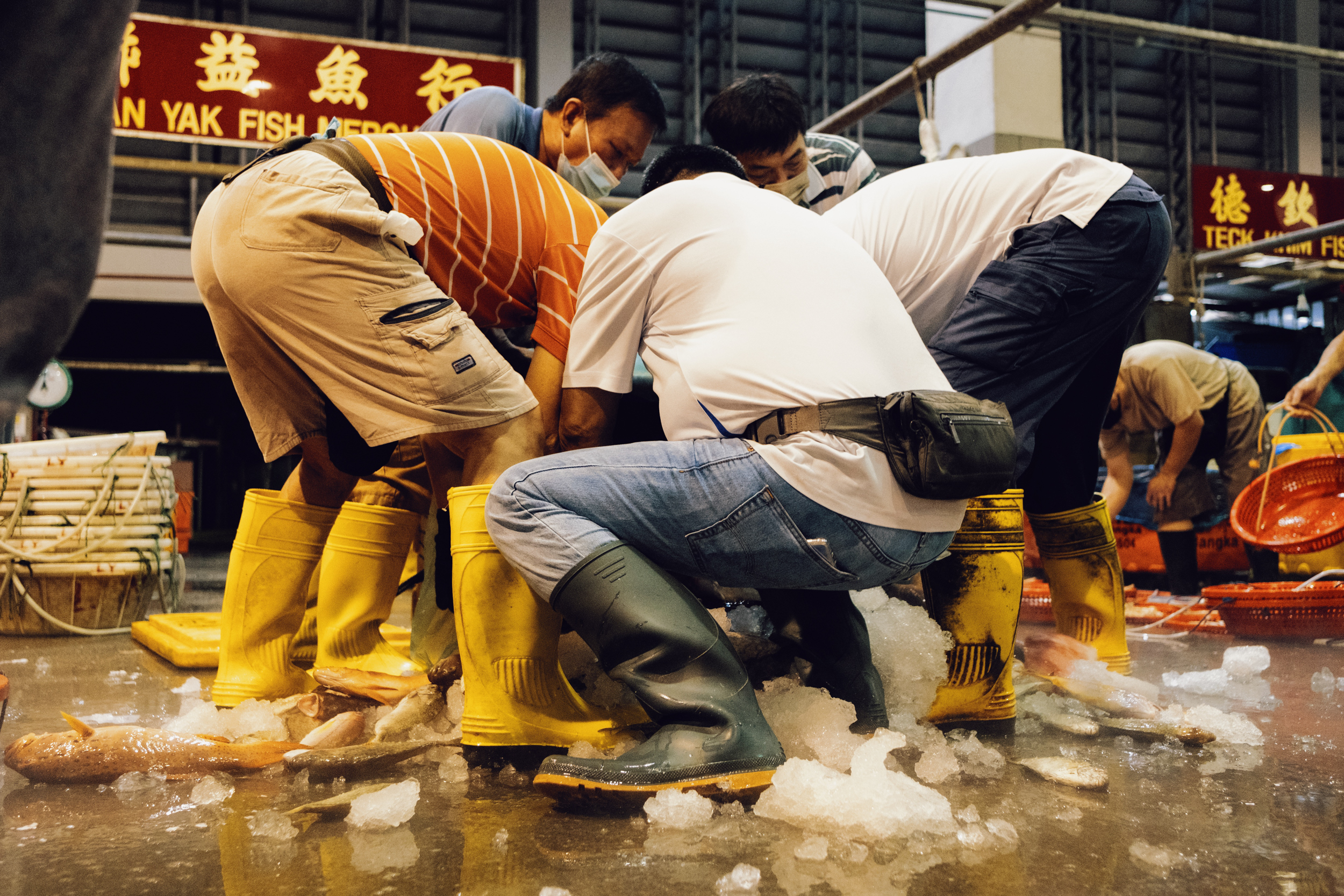 Customers help workers with unloading the heavy tubs of fishes. Image by Andrew Koay.
Customers help workers with unloading the heavy tubs of fishes. Image by Andrew Koay.
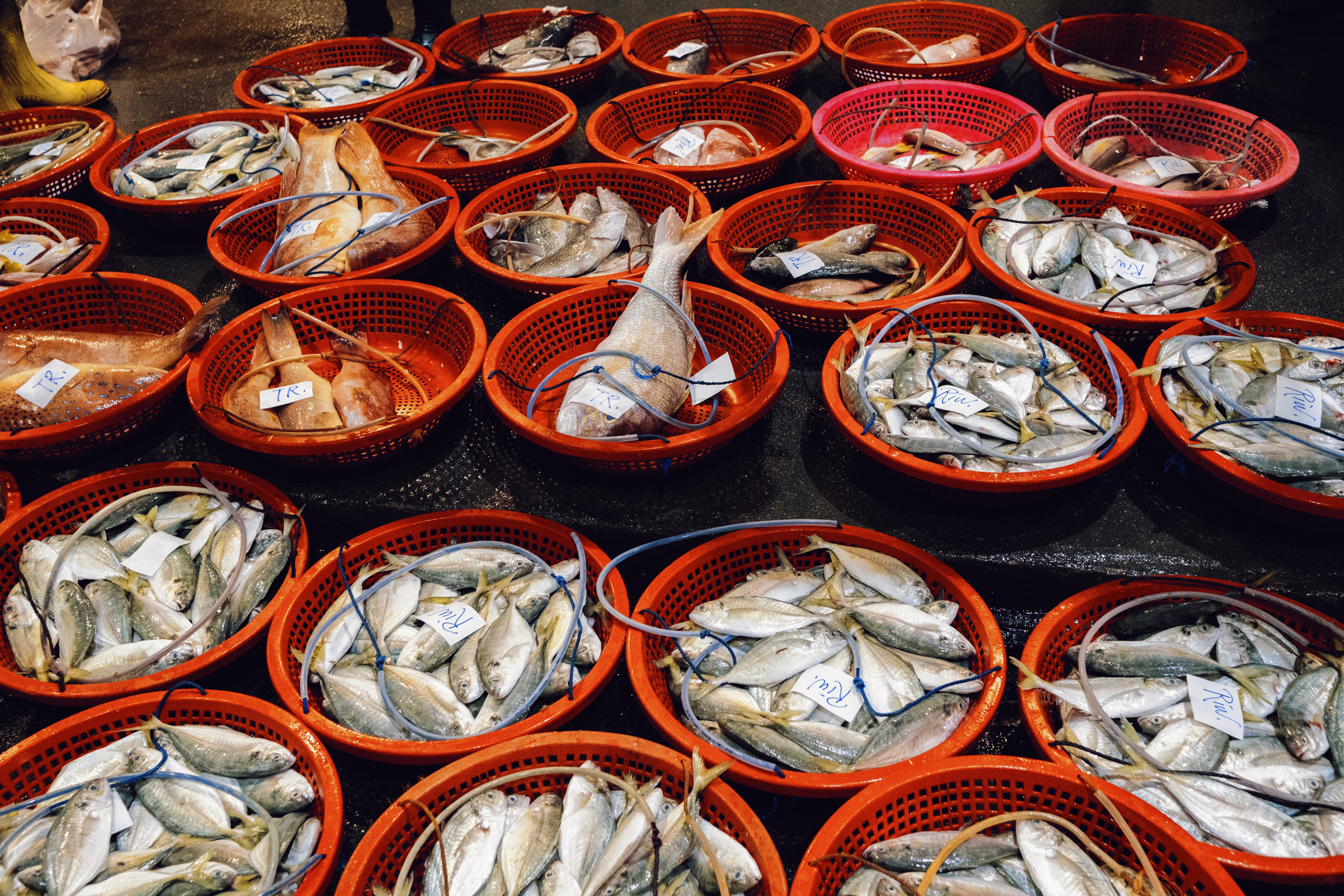 Image by Andrew Koay.
Image by Andrew Koay.
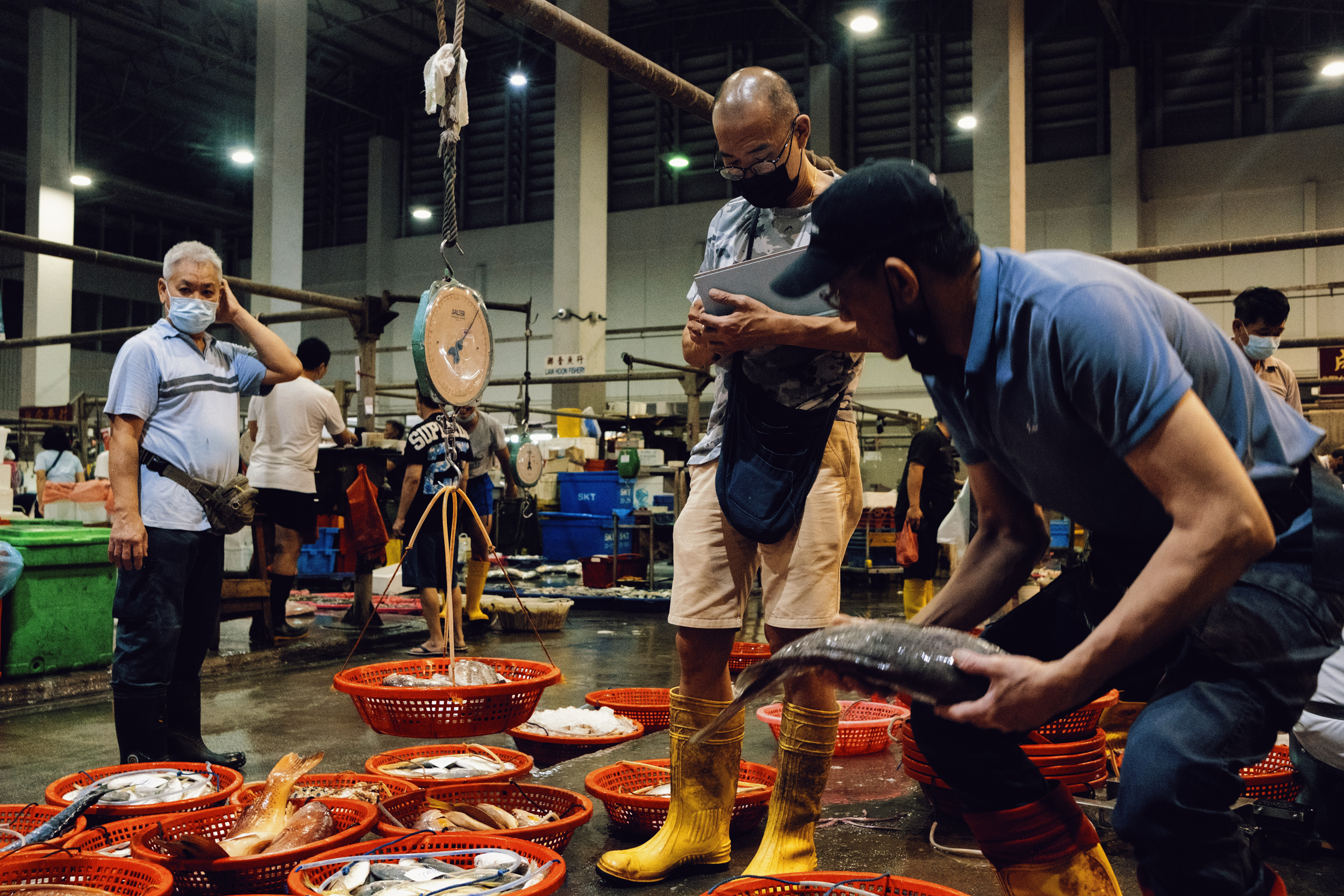 Davidson Goh (Centre) weighing fish. Image by Andrew Koay.
Davidson Goh (Centre) weighing fish. Image by Andrew Koay.
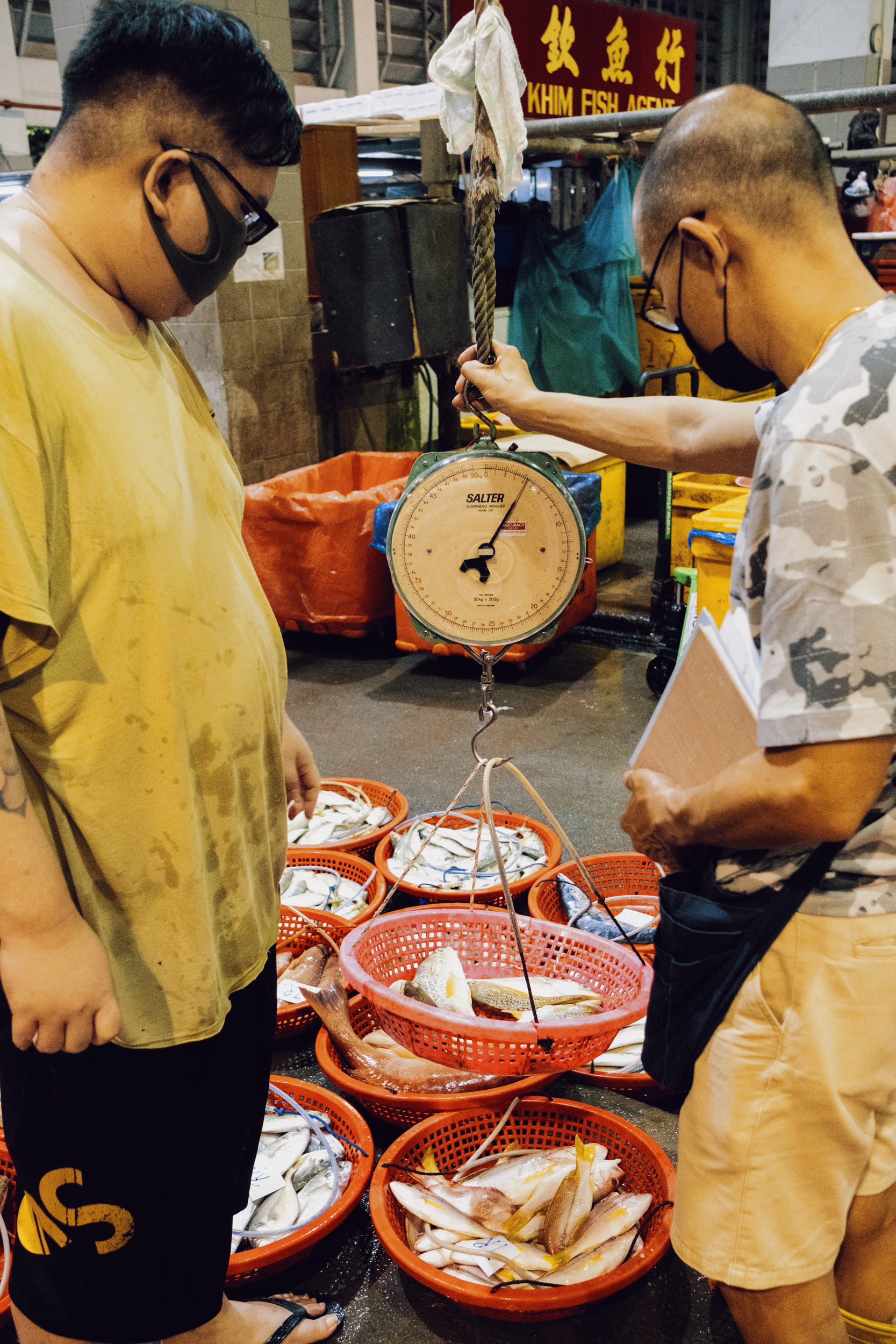 Image by Andrew Koay.
Image by Andrew Koay.
90 per cent of the Lian Yak's sales are to wet market mongers, though Goh sometimes sells to individuals looking to get the freshest ingredients for their home-cooked meals.
At Lian Yak's peak, Goh tells me that the wholesaler had 16 fishing vessels working in the waters around Singapore.
However, international disputes leading to a shrinking of fishing grounds have made catching their own fish unviable.
In 2021, Lian Yak sold off its last seven vessels; it now imports its fish from Malaysia, Thailand, and Indonesia.
"It was better when we had our own fishing vessels," he tells me wistfully.
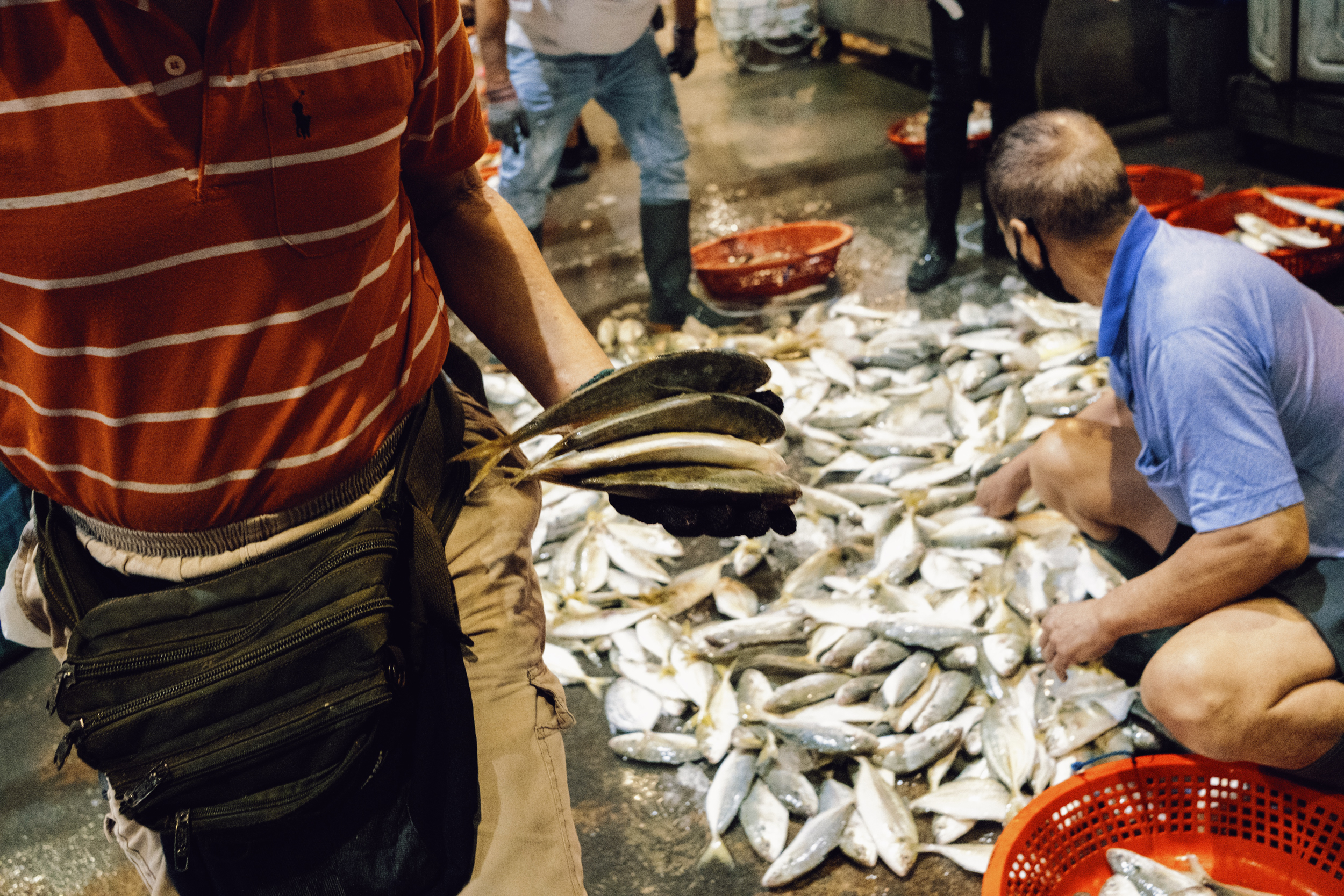 Customers examine the fish for freshness and pick the ones they're happy with. Image by Andrew Koay.
Customers examine the fish for freshness and pick the ones they're happy with. Image by Andrew Koay.
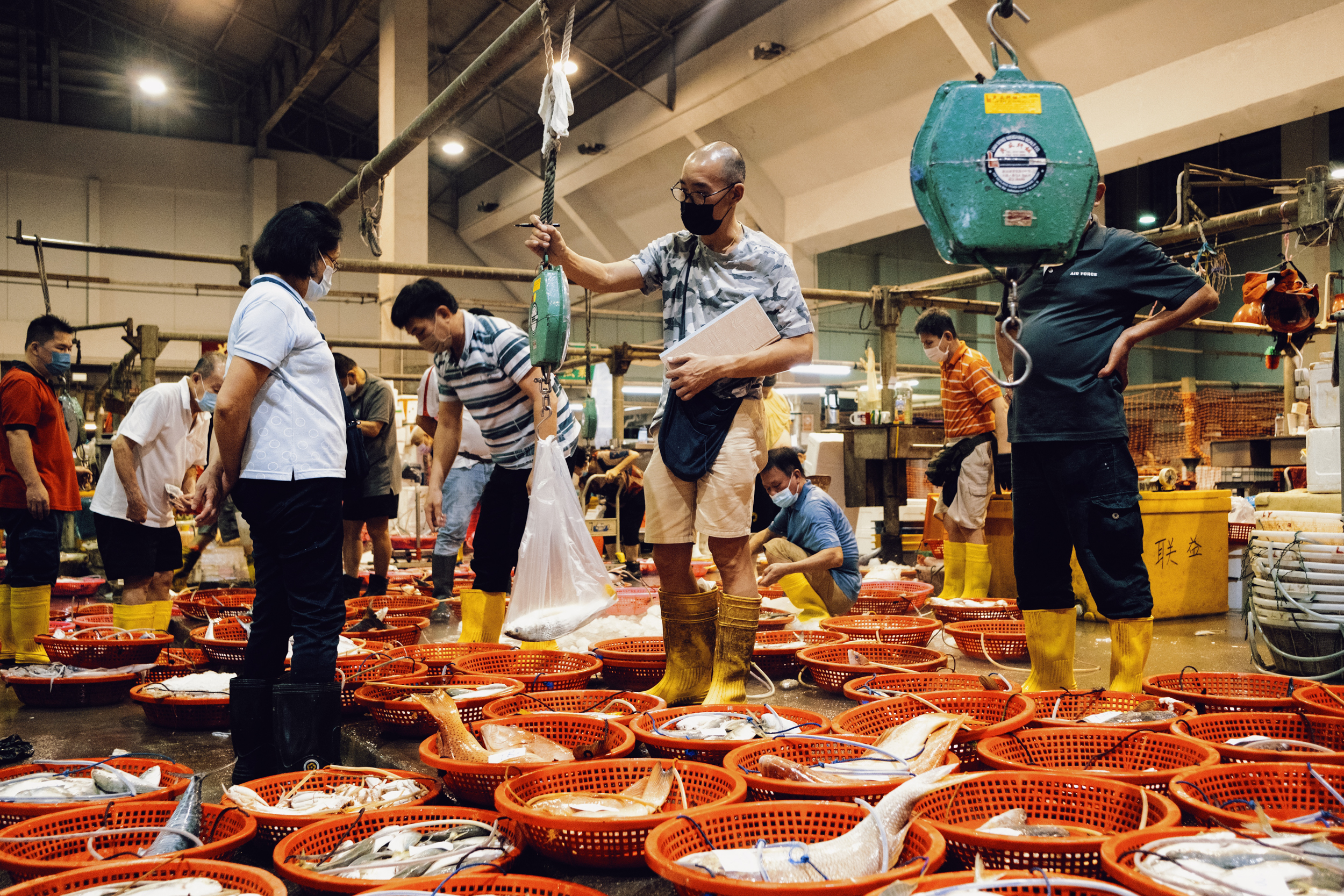 Image by Andrew Koay.
Image by Andrew Koay.
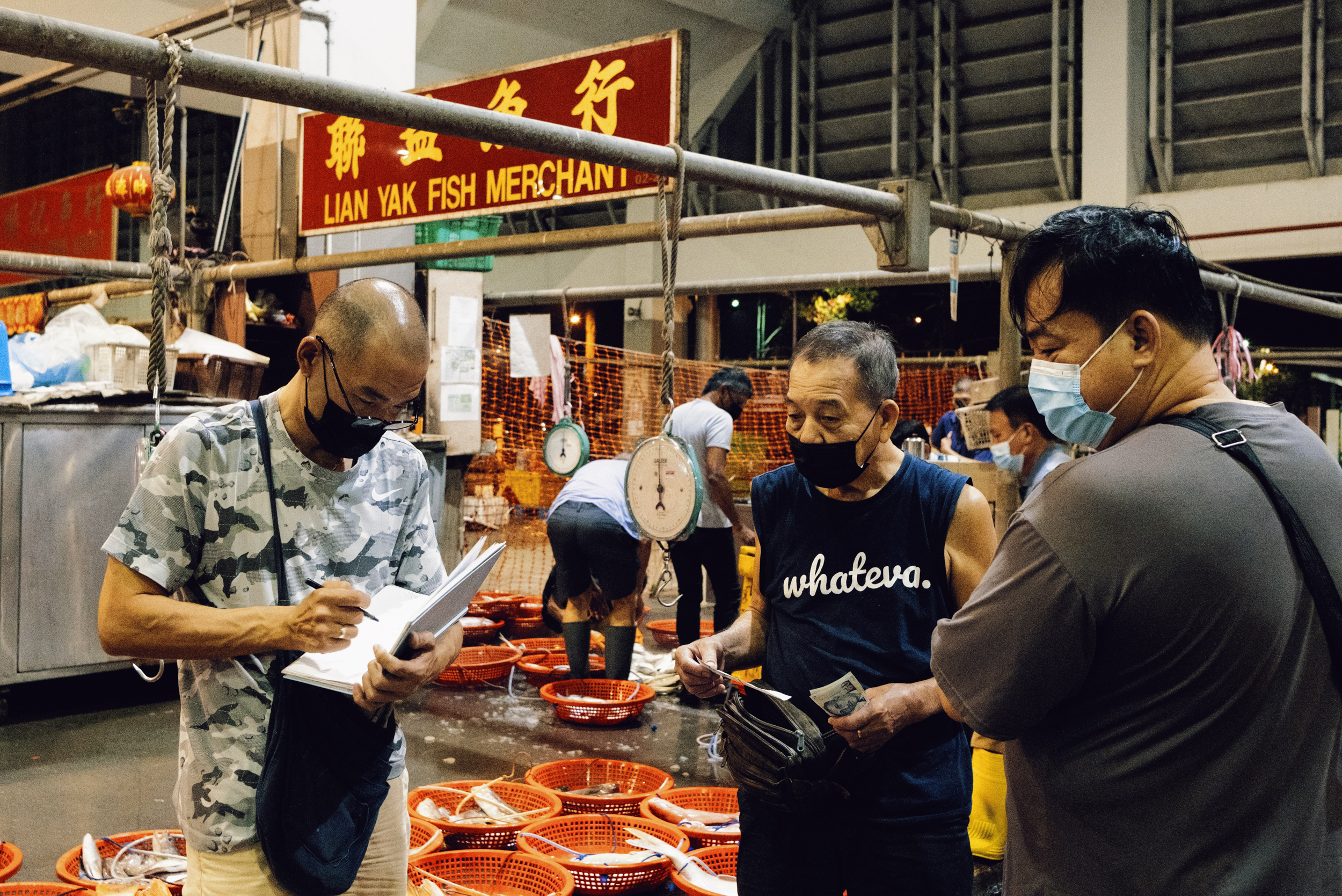 After some bargaining, money exchanges hands. Image by Andrew Koay.
After some bargaining, money exchanges hands. Image by Andrew Koay.
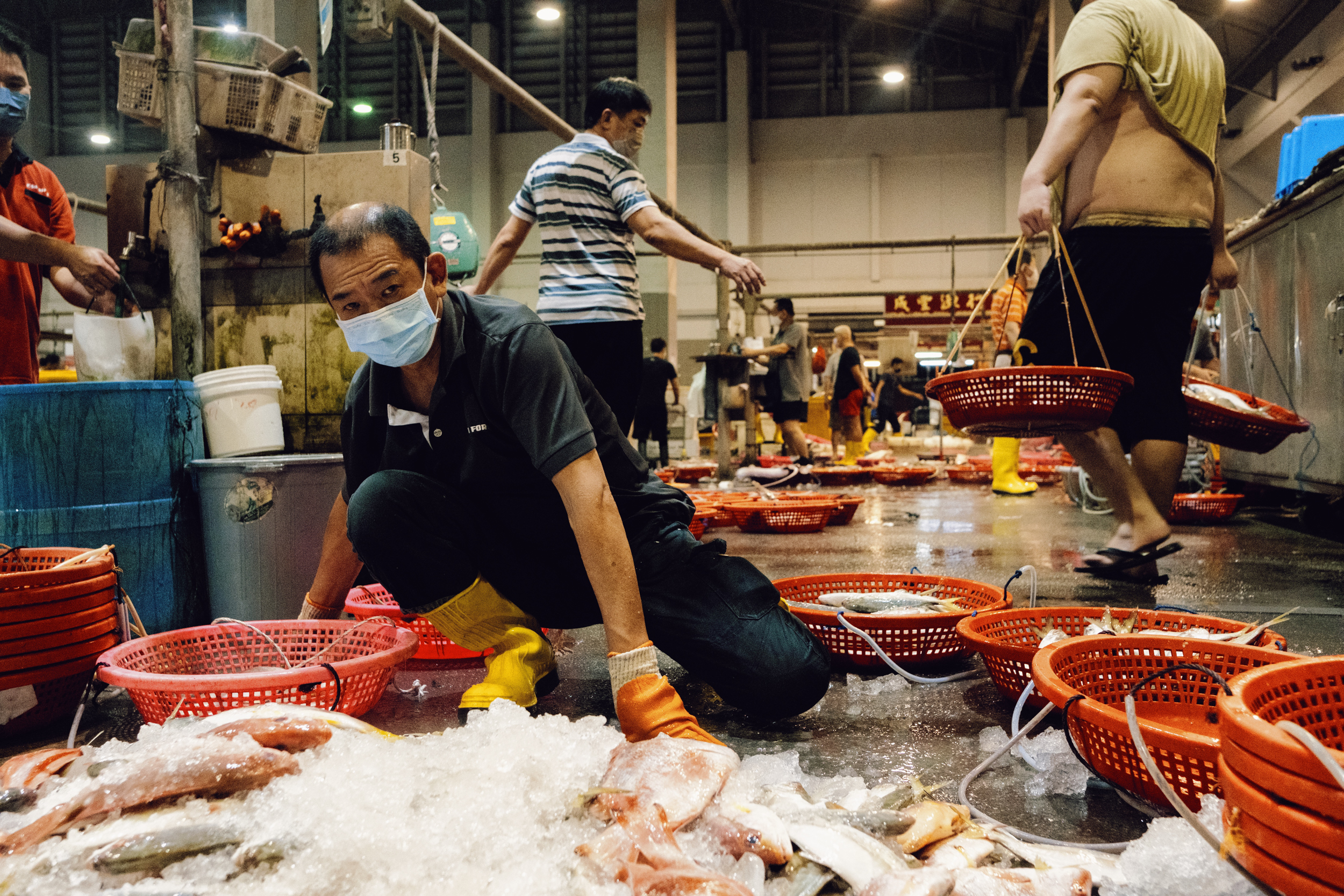 Image by Andrew Koay.
Image by Andrew Koay.
The next few hours go by in a whirlwind of activity.
As more tubs arrive, customers meander through, many stopping to examine the fishes.
When they've found something that catches their eye, they bring it to Goh for weighing.
After some bargaining, he scribbles down some figures in a long hardback notebook he's carrying and money changes hands.
It's a cycle that repeats throughout the night, with some customers returning periodically to check out the contents of new tubs.
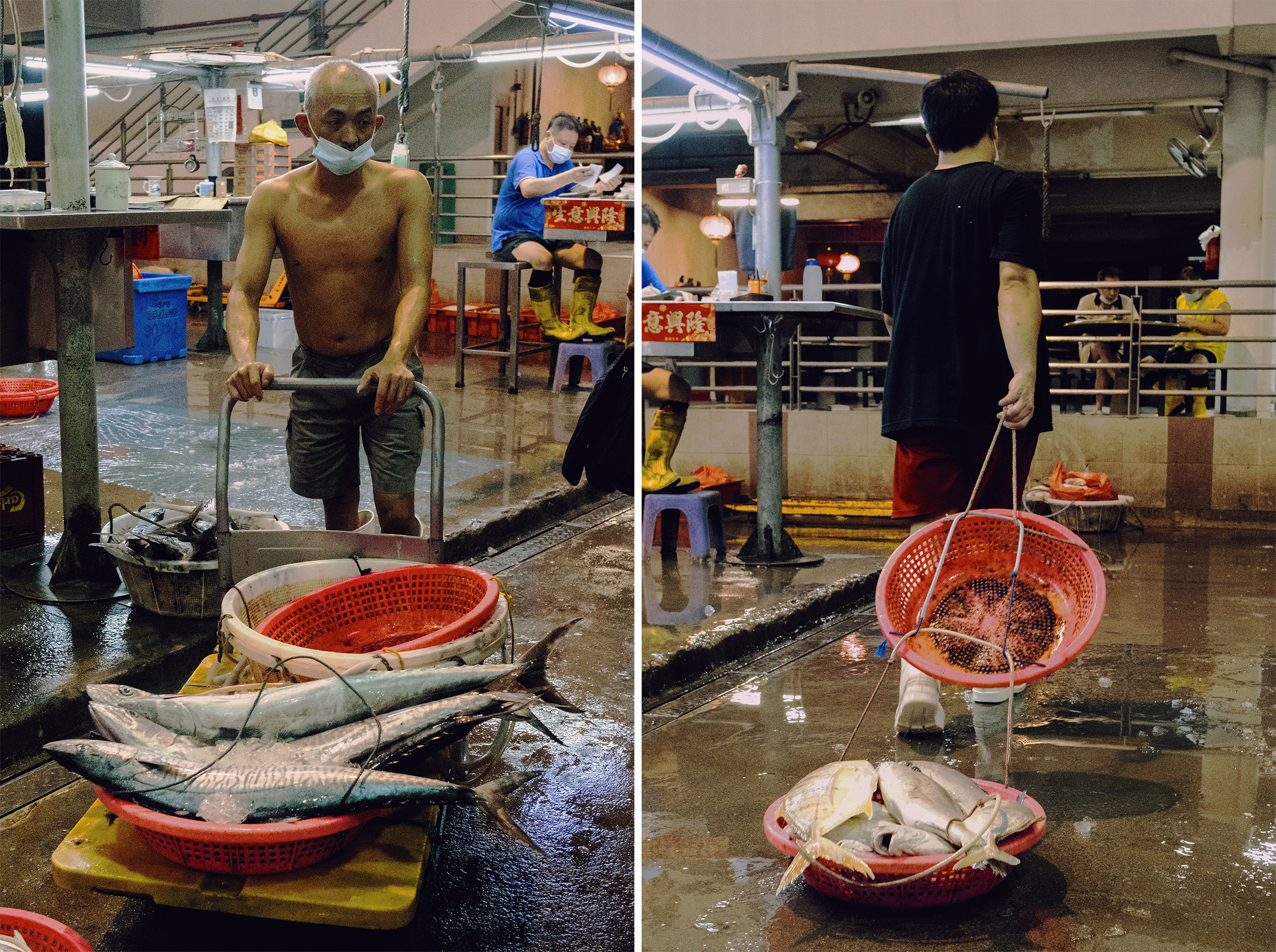 Fish mongers from around Singapore come to Senoko Fishery Port for the fresh fish that they bring back to sell at their wet markets. Image by Andrew Koay.
Fish mongers from around Singapore come to Senoko Fishery Port for the fresh fish that they bring back to sell at their wet markets. Image by Andrew Koay.
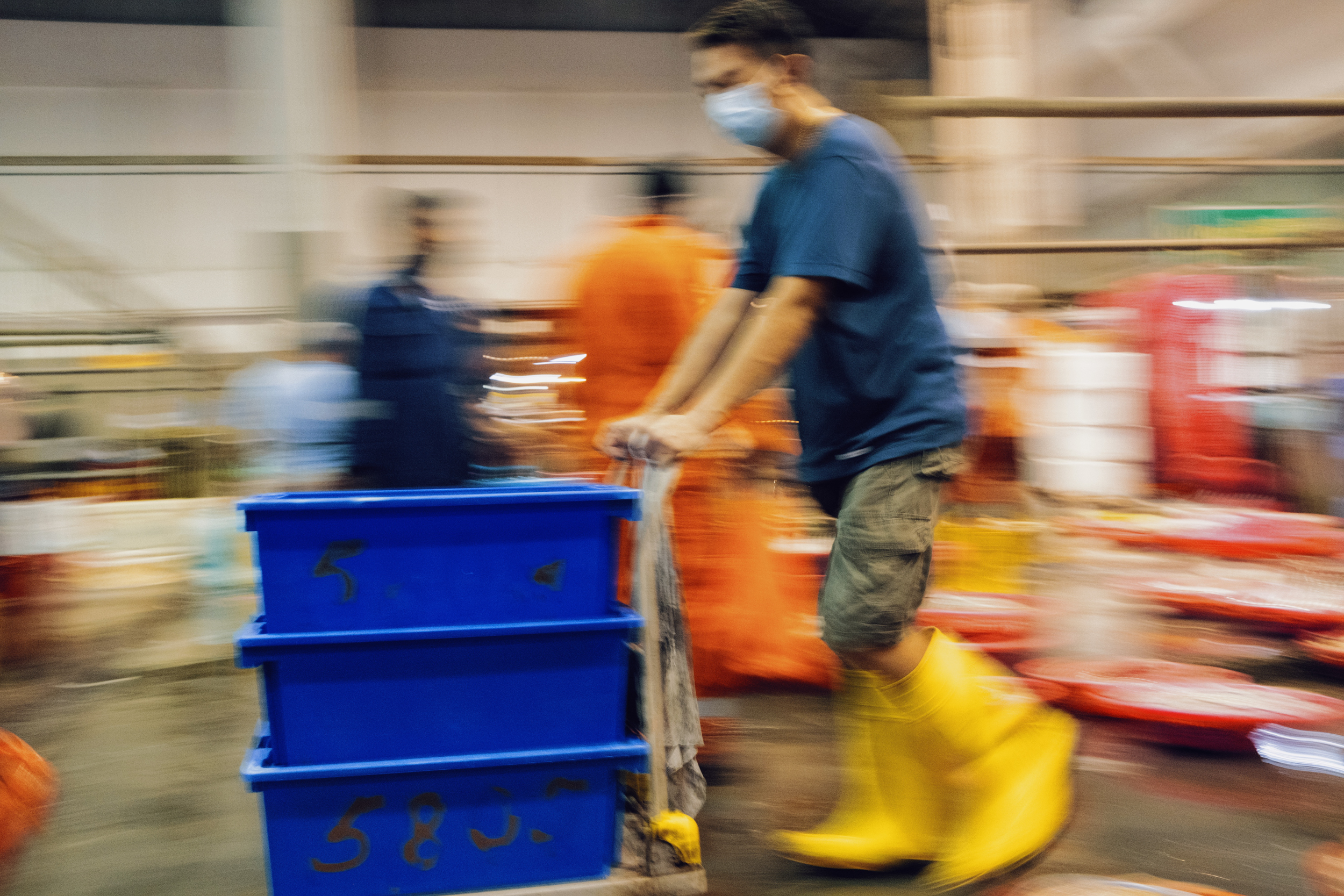 Image by Andrew Koay.
Image by Andrew Koay.
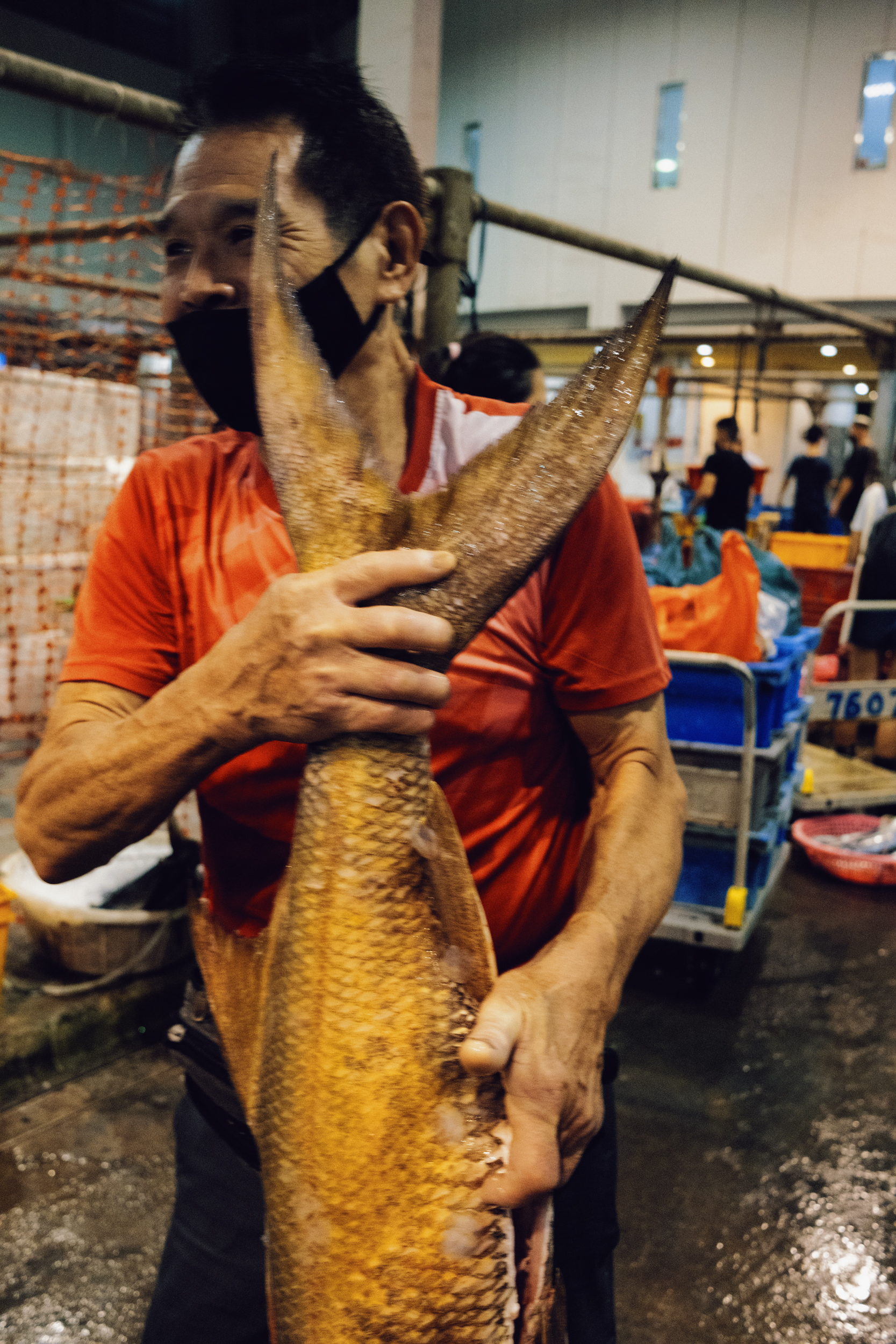 Image by Andrew Koay.
Image by Andrew Koay.
By 4am, a quiet has returned to Senoko Fishery Port and at 5:30am Lian Yak closes shop.
Goh estimates that he's sold three tons of fish today. In Lian Yak's heyday they might have sold eight to ten tons. "It used to be [that way]," he says.
In a few hours' time, after storing unsold fish and closing his accounts, Goh will return to his home in Serangoon North.
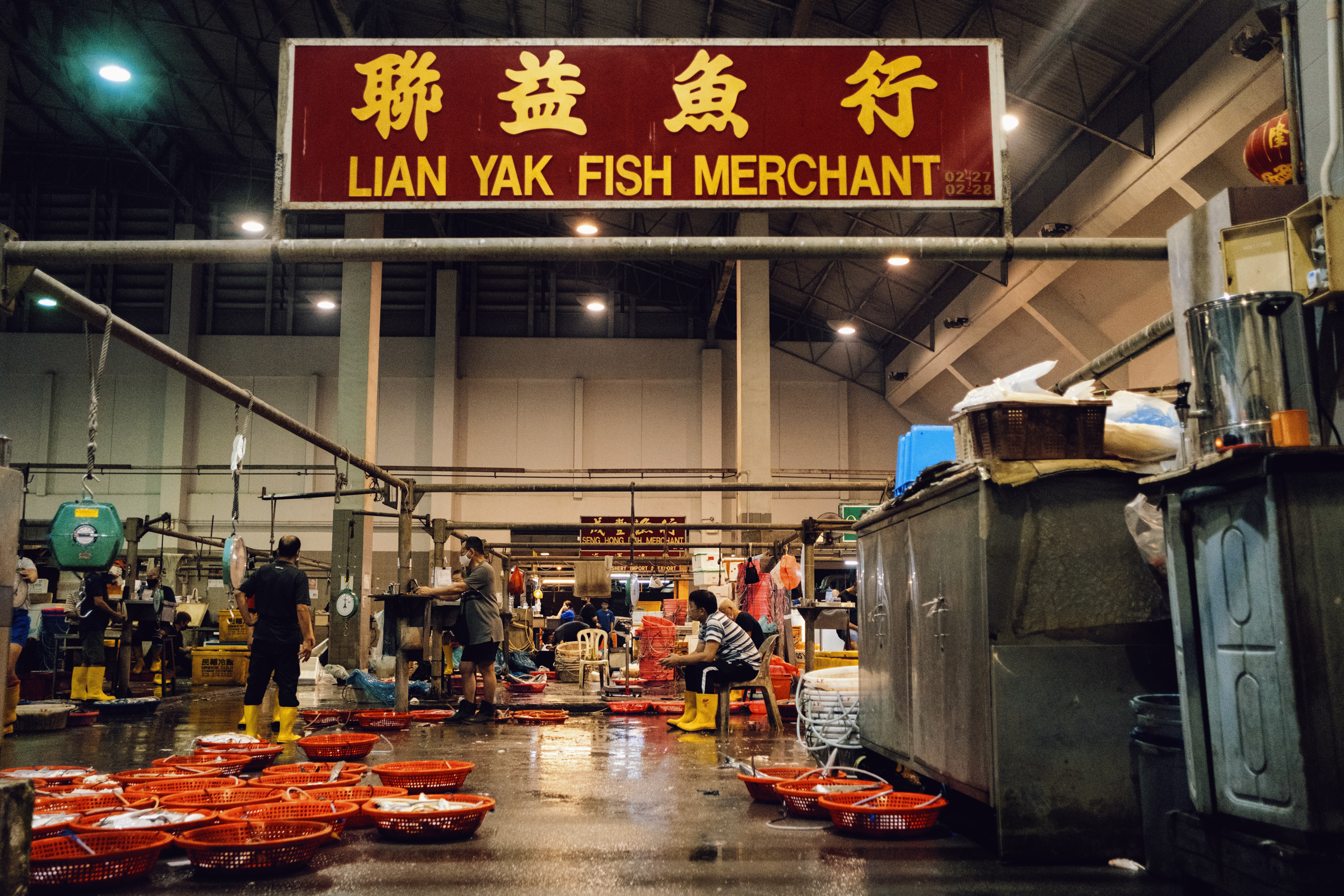 Quiet falls upon Senoko Fishery Port again. Image by Andrew Koay.
Quiet falls upon Senoko Fishery Port again. Image by Andrew Koay.
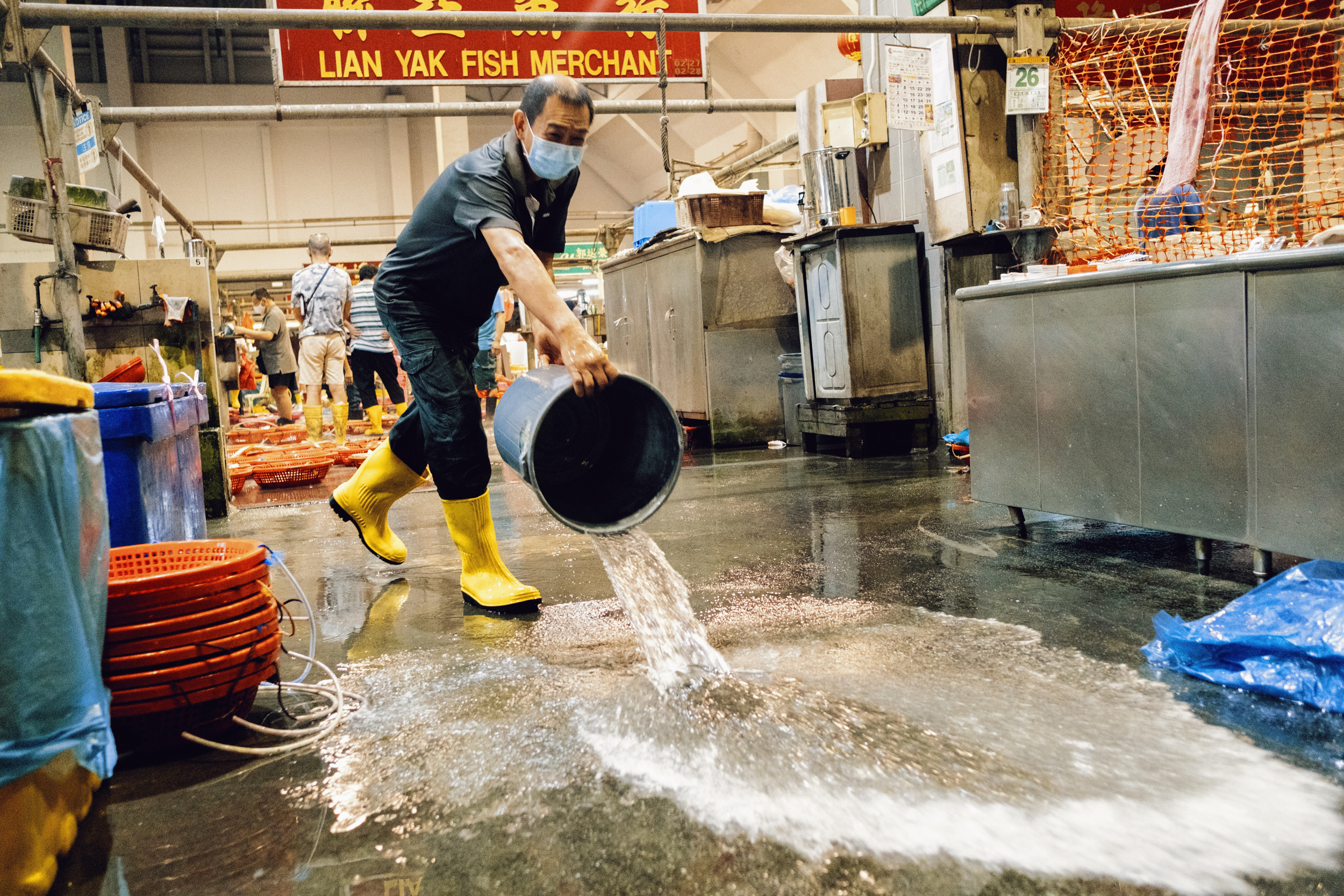 Workers at Lian Yak clean the stall. Image by Andrew Koay.
Workers at Lian Yak clean the stall. Image by Andrew Koay.
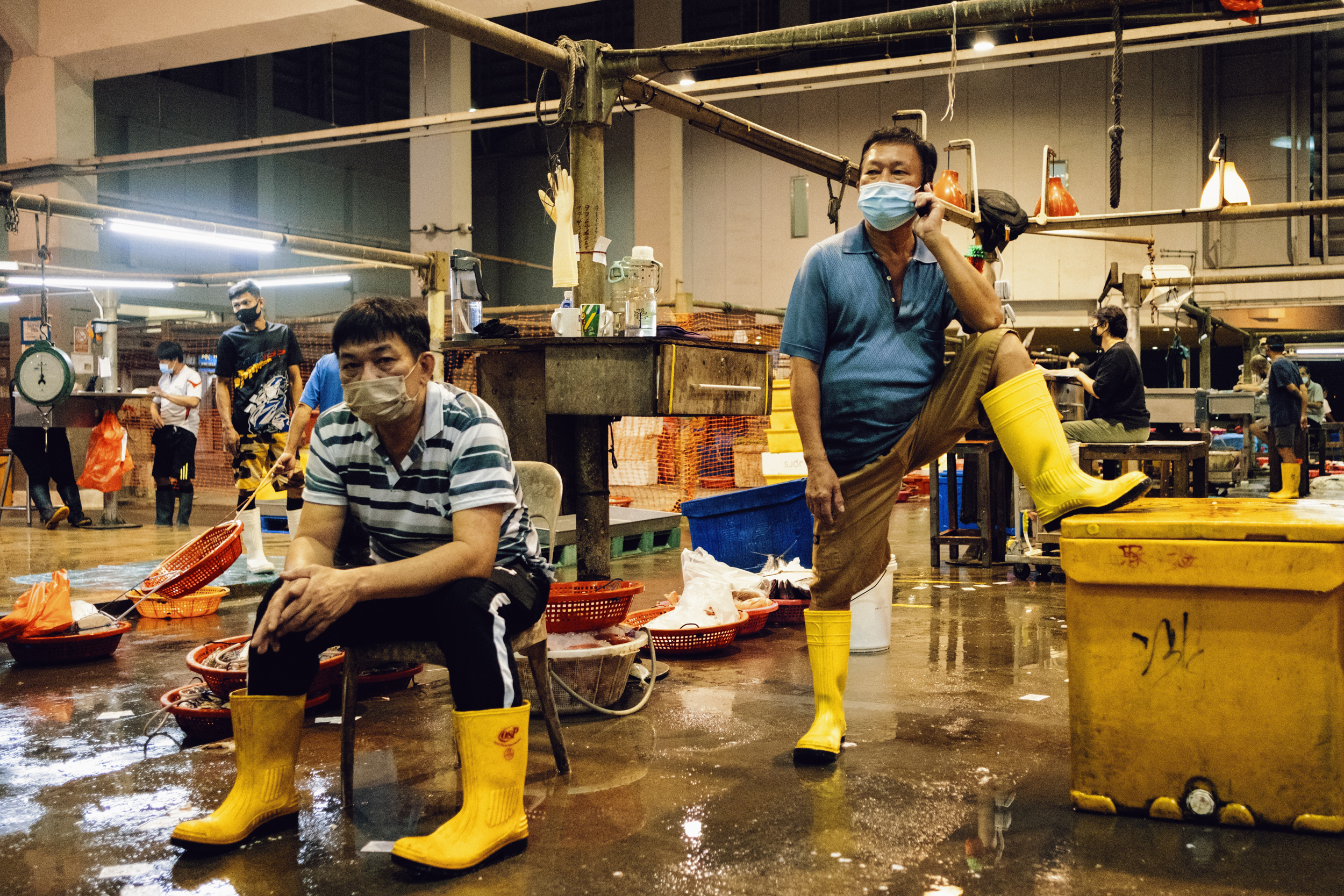 Image by Andrew Koay.
Image by Andrew Koay.
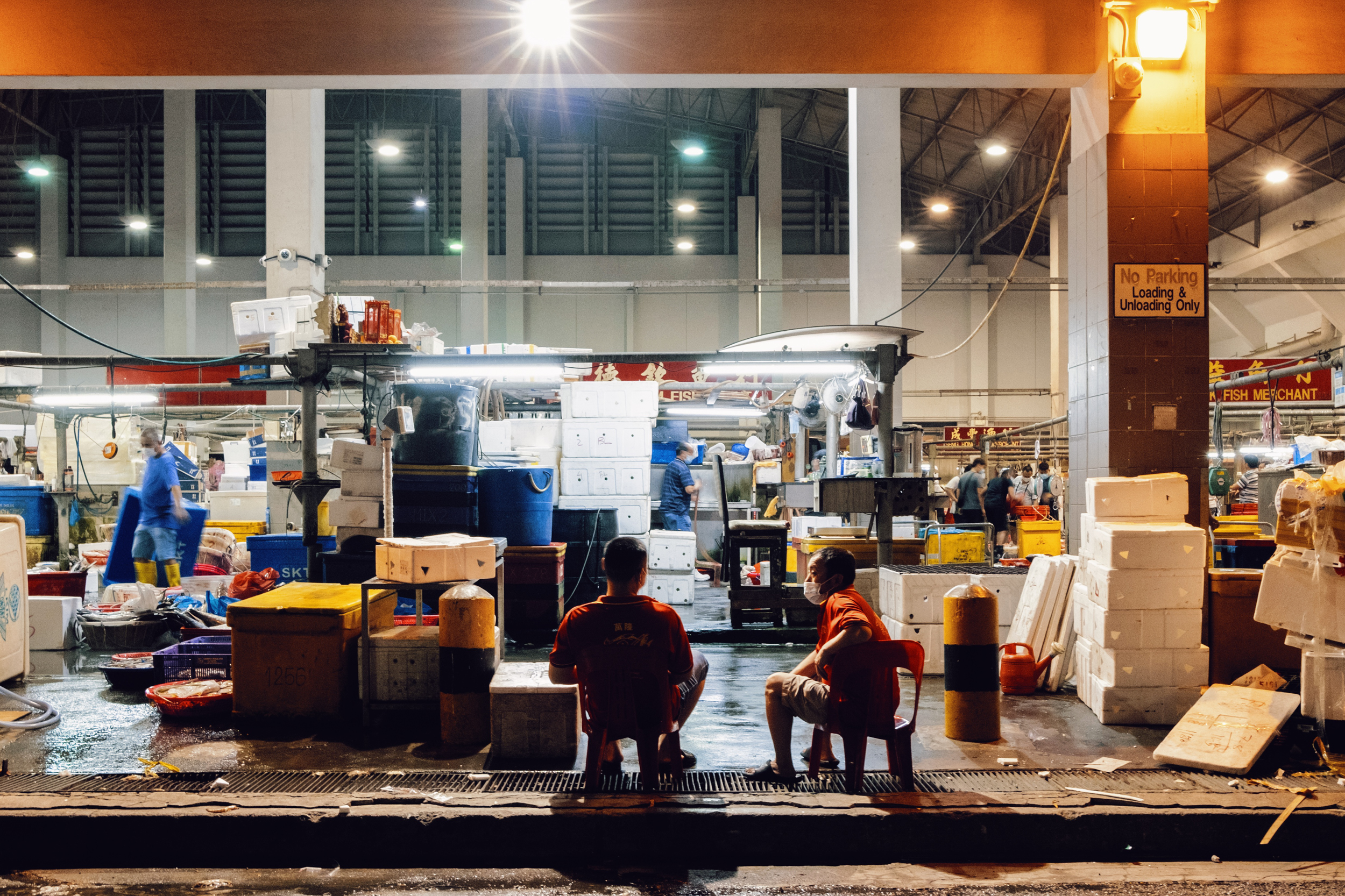 As the night winds down, workers take a moment to relax. Image by Andrew Koay.
As the night winds down, workers take a moment to relax. Image by Andrew Koay.
Decades of working in the early hours of the morning have completely reversed his sleep cycle — "if I travelled to Europe or the U.S. I won't get jet-lagged," he tells me.
Once he gets home, he'll have a meal — most likely fish — before settling into bed.
Then at 12am, he gets up and does it all again.
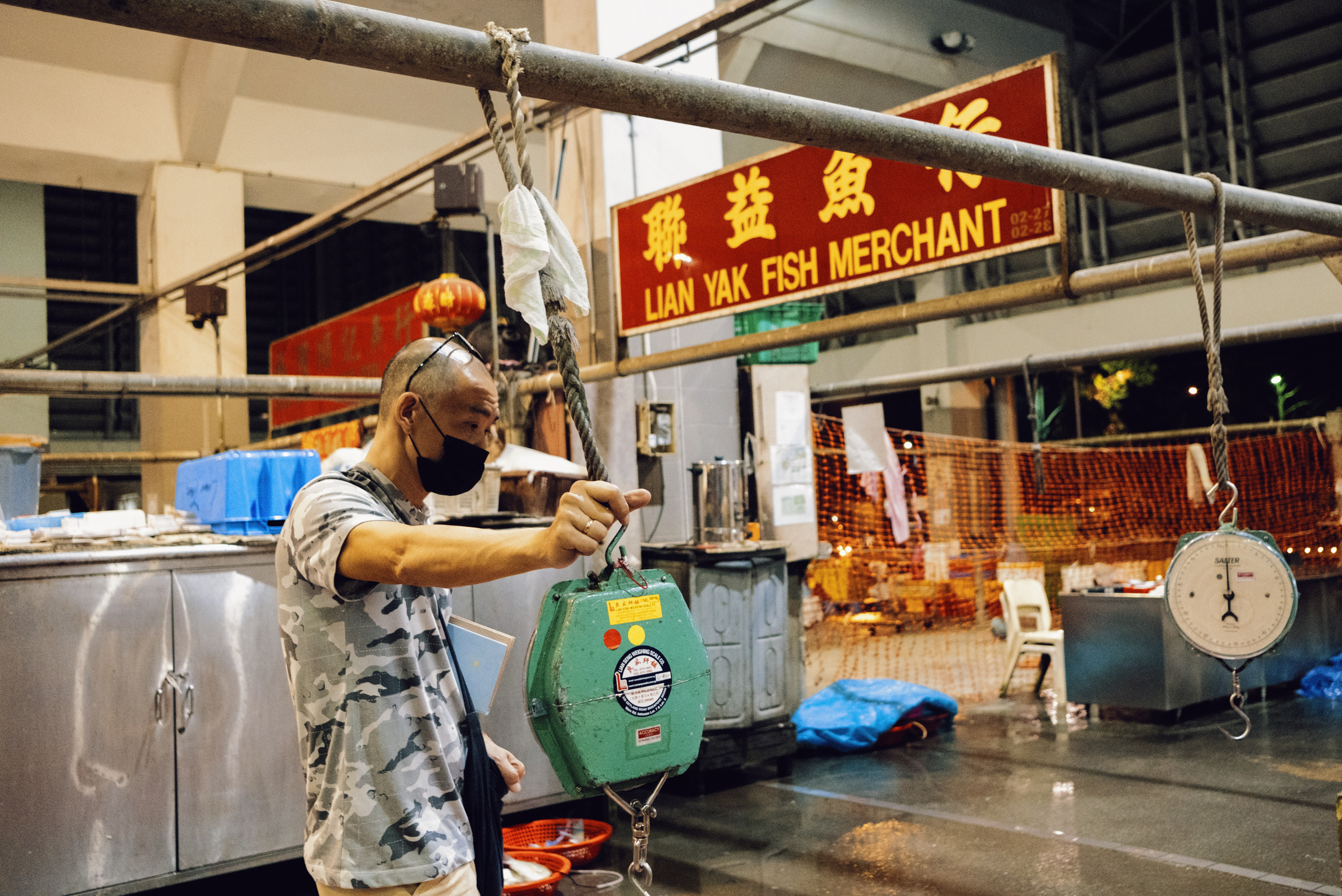 Davidson Goh, a third-generation fish wholesaler. Image by Andrew Koay.
Davidson Goh, a third-generation fish wholesaler. Image by Andrew Koay.
Mothership was connected with Lian Yak Fish Merchant through My Community, a non-profit organisation that works to capture and preserve community stories, reconnect people to places and social networks, and deepen heritage appreciation and expression across the country. Davidson Goh's story was one recently highlighted throughout the month of August 2022 during My Community Festival.
Top image by Andrew Koay
If you like what you read, follow us on Facebook, Instagram, Twitter and Telegram to get the latest updates.
